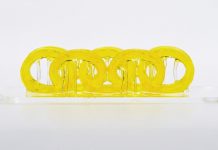
Scientists at MIT have discovered a new way to make computer chips more powerful by using super-thin materials.
These chips could help create things like chatbots that talk more like humans.
Traditional computer chips are made from chunky 3D materials, making it hard to stack many layers of transistors for better performance.
But using materials that are only about three atoms thick, we can stack them up to make more powerful chips.
Usually, making these thin materials on a silicon chip is difficult because it requires very high temperatures, which can break the chip.
The MIT researchers have found a way to make these materials at lower temperatures without damaging the chip. This new method also makes the process faster and smoother.
In the past, scientists had to make these thin materials somewhere else and then move them onto the chip.
This caused imperfections that made the final devices work less well. The new method from MIT lets them grow the thin layers directly on the chip, making the final product better.
The researchers focused on a material called molybdenum disulfide, which is perfect for making these thin layers.
To make the thin layers, they used a special process called metal-organic chemical vapor deposition (MOCVD). In this process, two chemicals that contain molybdenum and sulfur atoms are heated up in a chamber and turn into a gas. They then form chains of molybdenum disulfide on a surface.
However, this process needs very high temperatures, which can damage the silicon chip. To solve this problem, the researchers created a new furnace that has two separate chambers.
One chamber has a lower temperature for the silicon wafer, and the other has a higher temperature for the sulfur. The molybdenum and sulfur gases flow between the two chambers, and the molybdenum disulfide layer forms on the silicon wafer without damaging it.
The new method is also much faster than previous methods. It used to take a whole day to make one layer, but now it takes less than an hour.
Plus, the new method works well on larger surfaces, which is important for making chips that can be used in real products.
One of the researchers, Jiadi Zhu, compared the new method to building a multistory building. Traditional chips are like buildings with only one floor, but with their new method, they can add many floors of thin materials on top of the silicon. This helps to make the chips more powerful and able to do more amazing things.
The scientists want to improve their technique and use it to make even more layers of thin transistors. They also want to try their new method on flexible surfaces, like fabrics or paper. This could help make everyday objects like clothing or notebooks have built-in computer chips.
This new discovery has the potential to make computer chips smaller and more powerful, helping to create exciting new technology in the future.



